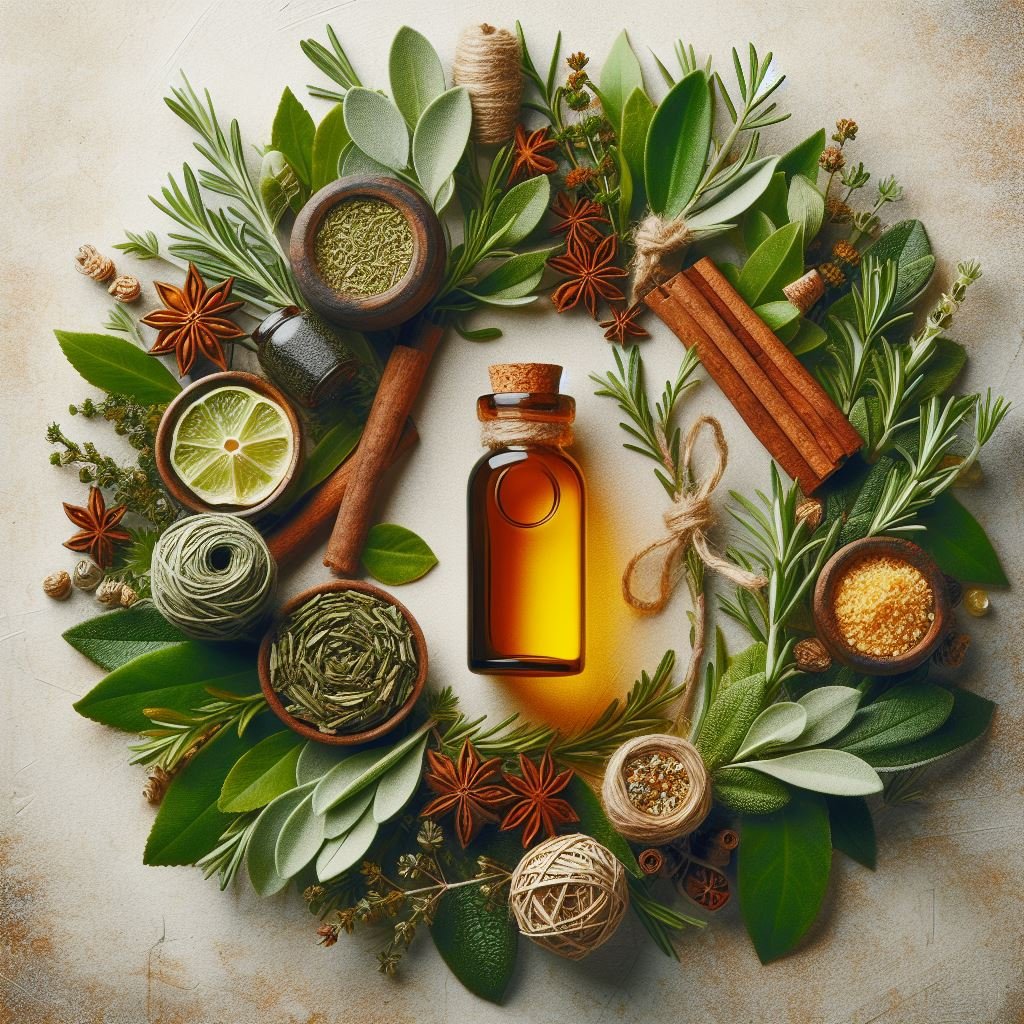Unveiling the Wonders of Natural Myrrh Essential Oil: A Comprehensive Guide
In the realm of natural remedies and holistic well-being, essential oils have gained widespread popularity for their therapeutic properties. Natural Myrrh essential oil, derived from the resin of the Commiphora myrrha tree, is a treasure trove of ancient healing wisdom. In this article, we will explore the origins, extraction process, benefits, and various applications of Myrrh essential oil, shedding light on its profound impact on health and wellness.
What Is Natural Myrrh Essential Oil?
The Origins and Extraction of Natural Myrrh Essential Oil
Myrrh, with its roots deeply embedded in ancient civilizations, has been revered for centuries. The resin is extracted from the bark of the Commiphora myrrha tree, primarily found in regions of the Middle East and Africa. The extraction process involves making incisions in the tree bark, allowing the resin to ooze out. Once collected, the resin undergoes steam distillation to extract the precious Myrrh oil.
Aromatherapy and Emotional Well-being
One of the primary uses of Myrrh oil lies in aromatherapy, where its rich, earthy aroma is believed to evoke a sense of tranquility and grounding. The oil has been historically used to promote emotional balance, alleviate stress, and create an atmosphere of serenity. Incorporating Myrrh oil into diffusers or inhaling it through steam can be an effective way to experience its calming effects.
Physical Health Benefits
Natural Myrrh essential oil is celebrated for its myriad of health benefits. Its potent anti-inflammatory and antimicrobial properties make it a valuable asset in supporting skin health. It is often used topically to soothe minor skin irritations, reduce the appearance of blemishes, and promote overall skin rejuvenation.
Furthermore, Myrrh oil is renowned for its ability to support oral health. Incorporating a few drops into homemade toothpaste or mouthwash can help maintain healthy gums and teeth. Its astringent properties contribute to a cleaner and healthier oral environment.
Spiritual and Ritualistic Uses
Beyond its physical and emotional benefits, Myrrh oil holds cultural and spiritual significance. In various ancient traditions, it was used in religious ceremonies and rituals due to its perceived purifying and sacred qualities. The sweet, resinous scent of Myrrh has been believed to enhance meditation practices, foster spiritual connection, and elevate the energy in sacred spaces.
Precautions and Tips for Usage
While Natural Myrrh essential oil offers numerous benefits, it’s essential to use it with caution. Always dilute it with a carrier oil before applying it to the skin to avoid potential irritation. Pregnant or nursing women and individuals with specific health conditions should consult with a healthcare professional before incorporating Myrrh essential oil into their wellness routine.
Myrrh oil, with its ancient roots and versatile benefits, is a valuable addition to the world of natural remedies. From promoting emotional well-being to supporting physical health and spiritual practices, this aromatic oil continues to captivate enthusiasts seeking holistic approaches to wellness. Embrace the wisdom of the ages and explore the wonders of Myrrh essential oil on your journey to a healthier, more balanced life.
How is Benzoin Essential Oil Obtained?
Unveiling the Mysteries: How is Myrrh Essential Oil Obtained?
Myrrh essential oil, with its rich history and profound therapeutic properties, has been a prized substance since ancient times. Derived from the resin of the Commiphora myrrha tree, the process of obtaining Myrrh essential oil is a fascinating journey that involves both nature and human expertise. In this article, we will delve into the intricate steps of extraction, shedding light on the methods that bring this precious oil to life.
The Commiphora Myrrha Tree – Nature’s Gift
The journey of Myrrh oil begins with the Commiphora myrrha tree, a small, thorny shrub native to regions of the Middle East and Africa. Recognized for its aromatic resin, the tree plays a crucial role in the production of Myrrh essential oil. The resin, stored in the bark, is the reservoir of the therapeutic compounds that make Myrrh oil so valuable.
Traditional Harvesting Techniques
Harvesting Myrrh resin is a meticulous process deeply rooted in tradition. Skilled harvesters make incisions in the bark of the Commiphora myrrha tree, allowing the resin to ooze out slowly. This intentional method ensures sustainability, as it doesn’t harm the tree and allows for future harvests. The resin appears in small droplets, gradually solidifying into tear-shaped nodules, often referred to as “tears of Myrrh.”
Steam Distillation – The Essence Unveiled
Once the Myrrh resin has been harvested, it undergoes the essential oil extraction process known as steam distillation. This method is a delicate dance of heat and steam, designed to capture the aromatic essence without compromising its therapeutic properties. The resin is placed in a still, and steam is passed through it, causing the volatile compounds to evaporate. These vapors are then condensed back into liquid form, yielding the pure and concentrated Myrrh essential oil.
Quality Assurance and Purity
The quality of Myrrh oil is paramount, and reputable producers prioritize rigorous testing and quality assurance measures. Essential oil enthusiasts should seek products from trusted sources that provide transparency about their extraction methods, ensuring the purity and authenticity of the oil.
Diverse Applications of Myrrh Essential Oil
Myrrh essential oil, once obtained through this intricate process, becomes a versatile tool for various applications. From aromatherapy and skincare to oral health and spiritual practices, the uses of Myrrh oil are as diverse as its origins.
The journey from the Commiphora myrrha tree to the bottle of Myrrh essential oil is a testament to the harmonious collaboration between nature and human craftsmanship. Understanding the intricate process of obtaining Myrrh oil adds a layer of appreciation for this ancient remedy, inviting individuals to explore its therapeutic benefits with a newfound understanding of its origins. Embrace the essence of Myrrh and unlock the secrets of this precious gift from the natural world.
What is Composition of Myrrh Essential Oil?
“Decoding Myrrh Essential Oil: A Closer Look at its Composition”
Myrrh oil, a time-honored elixir with roots in ancient traditions, is renowned for its myriad therapeutic benefits. To truly understand the magic it holds, let’s embark on a journey into the intricate world of its composition. In this article, we’ll unravel the molecular secrets that make Myrrh essential oil a powerhouse of wellness.
The Elemental Symphony
Myrrh oil is a complex blend of organic compounds, each contributing to its distinct aroma and therapeutic properties. The primary components include:
Terpenoids: These are the major players in Myrrh essential oil. Terpenoids, such as limonene and pinene, contribute to its anti-inflammatory and antimicrobial qualities. These compounds are essential for the oil’s ability to support skin health and combat various pathogens.
Sesquiterpenes: Myrrh contains sesquiterpenes like curzerene and furanoeudesma-1,3-diene, which are known for their anti-inflammatory and immune-boosting properties. These compounds play a crucial role in promoting overall well-being.
Therapeutic Properties
Understanding the composition of Myrrh essential oil helps unveil its therapeutic potential:
Anti-Inflammatory: Limonene and other terpenoids in Myrrh oil contribute to its anti-inflammatory properties, making it beneficial for soothing skin irritations and reducing inflammation in various conditions.
Antimicrobial: The sesquiterpenes found in Myrrh oil exhibit antimicrobial activity, making it a valuable addition to skincare routines. It can aid in combating bacteria and fungi, promoting a healthy complexion.
Astringent: Myrrh’s astringent properties, attributed to compounds like curzerene, make it beneficial for oral health. It is often used to support gum health and maintain oral hygiene.
Harnessing the Power of Myrrh Essential Oil
Now that we understand the composition and therapeutic properties of Myrrh oil, let’s explore practical ways to incorporate it into daily life:
Skincare: Add a few drops of Myrrh oil to your favorite carrier oil or unscented lotion to promote healthy skin. Its anti-inflammatory and rejuvenating properties can benefit various skin types.
Oral Health: Create a natural mouthwash by diluting Myrrh essential oil with water. Gargle to support gum health and maintain fresh breath.
Aromatherapy: Diffuse Myrrh oil in your living or work space to enjoy its calming and grounding effects. This is an excellent way to elevate your mood and create a serene environment.
Myrrh oil, with its intricate composition, offers a holistic approach to well-being. As we decode the molecular secrets within, we uncover the diverse benefits that have made Myrrh a staple in natural health practices throughout history. Embrace the power of Myrrh and unlock the potential for a healthier, more balanced life.













Reviews
There are no reviews yet.